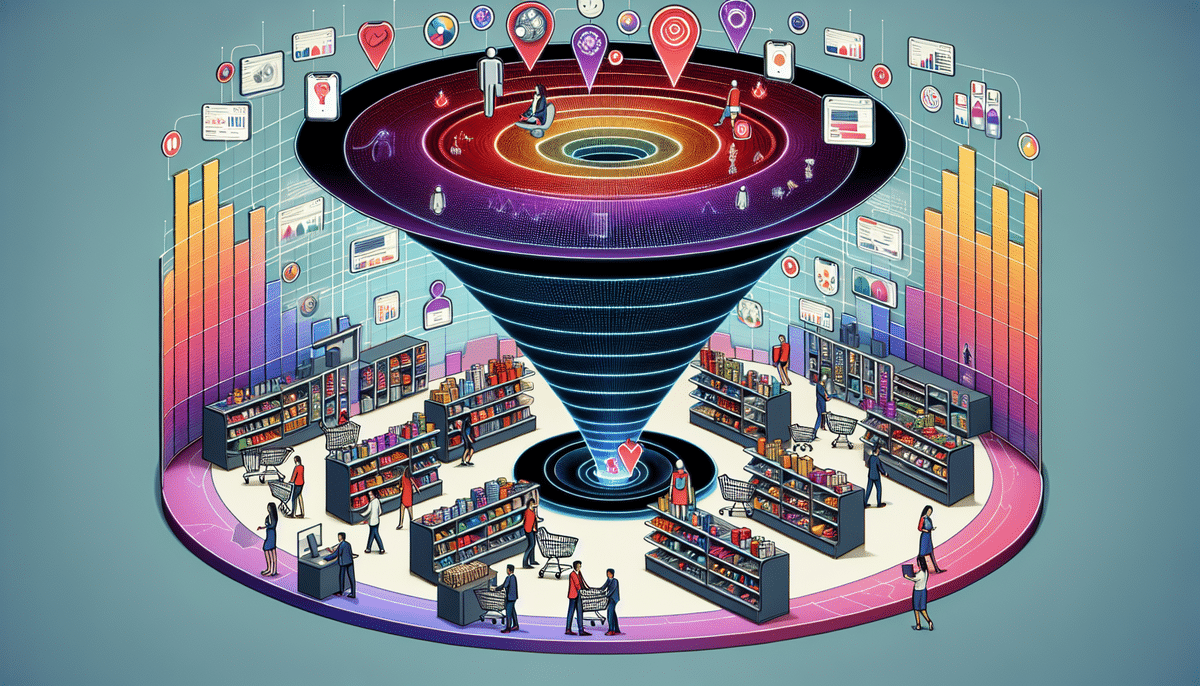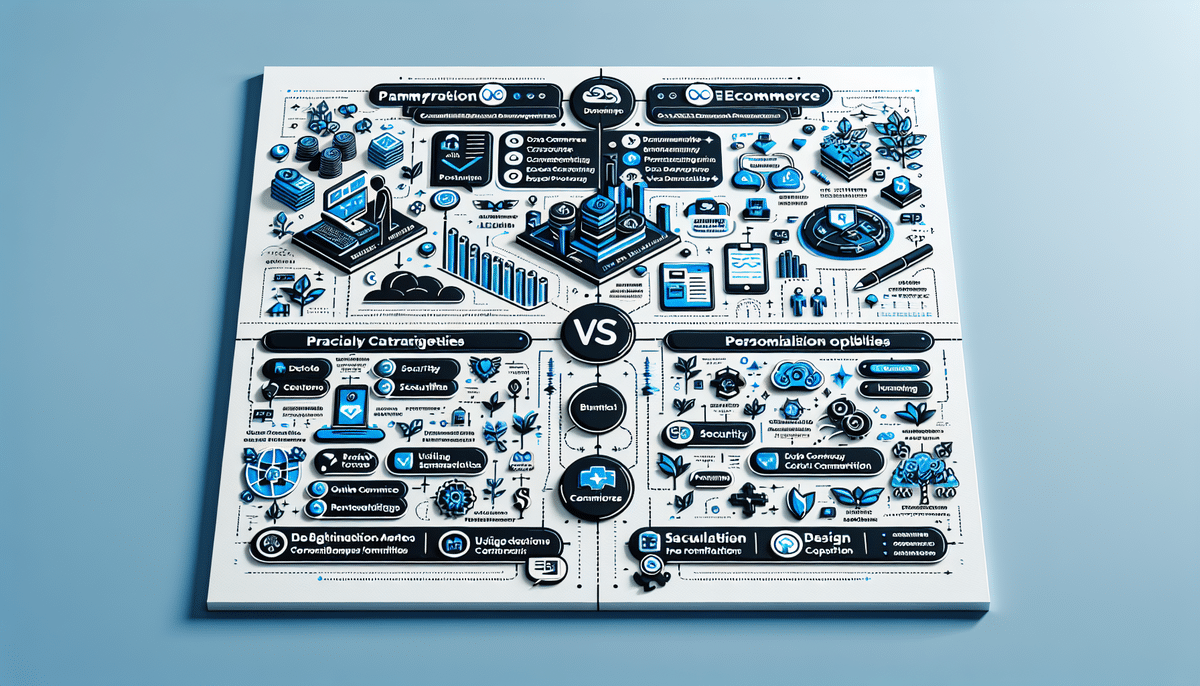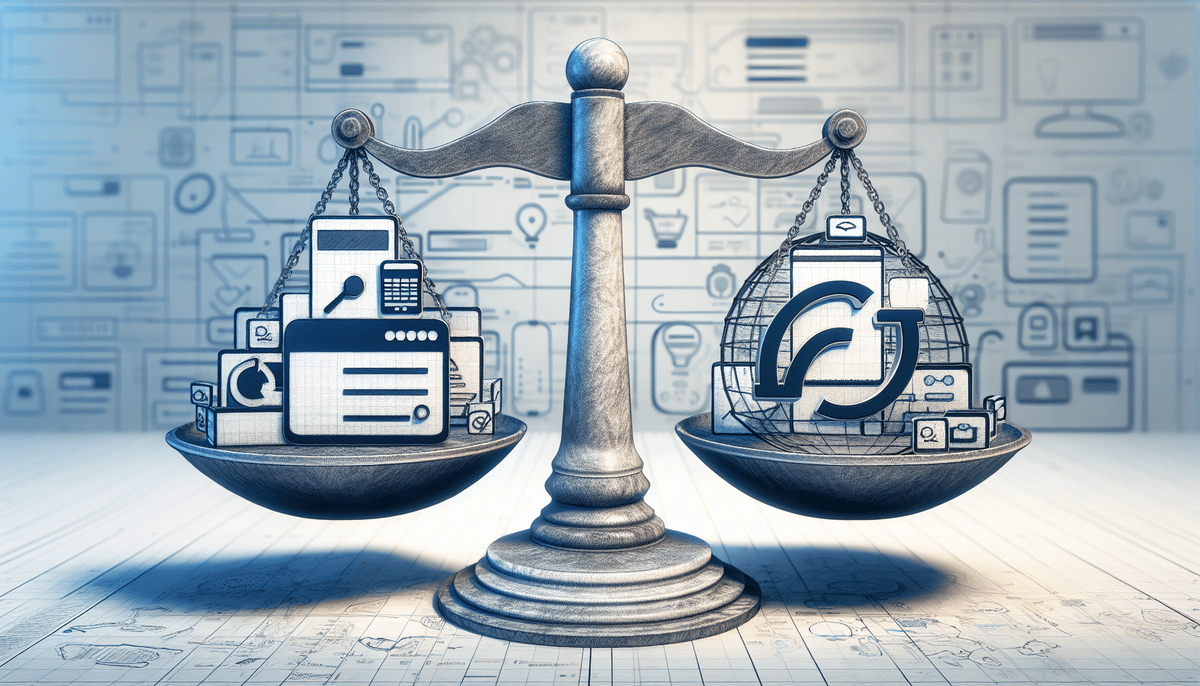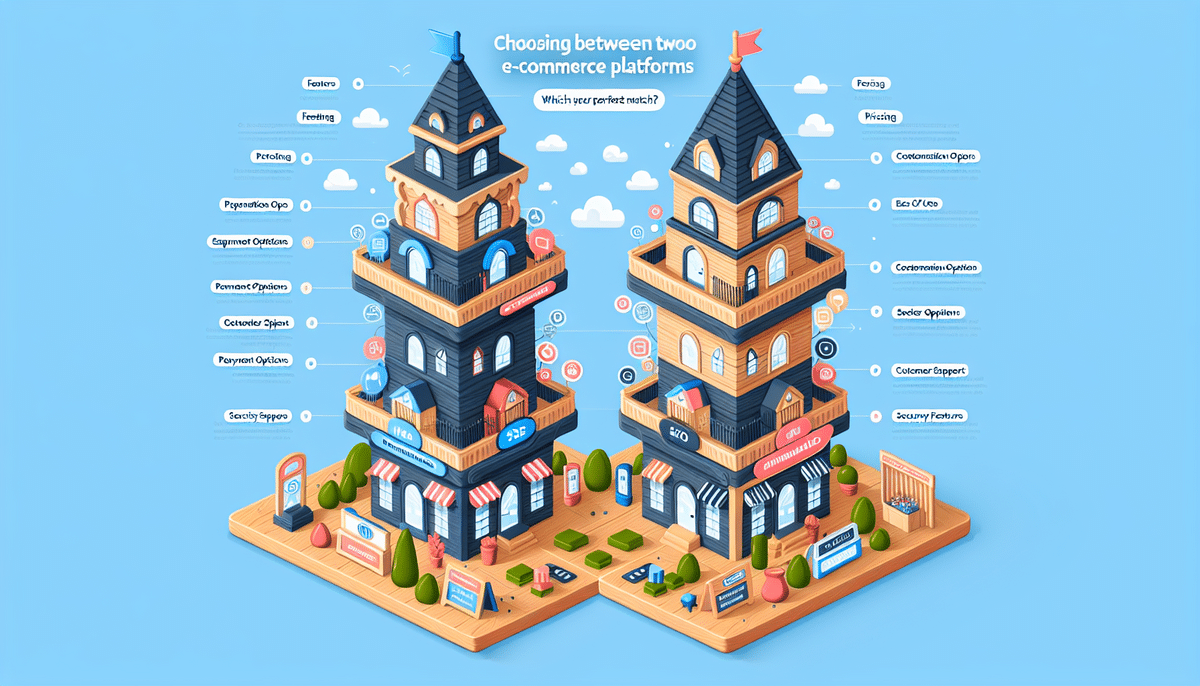How to Master the Art of Upselling
Upselling is a valuable strategy for businesses of all sizes and industries. It involves encouraging customers to purchase additional products or services that complement or enhance their existing purchase. According to a study by Shopify, effective upselling can increase revenue by up to 30%. Not only does upselling boost revenue, but it also helps build stronger relationships with customers by demonstrating a deeper understanding of their needs. In this article, we'll explore why upselling is important, how to identify the best opportunities for upselling, and provide tips for effective cross-selling to help you master the art of upselling.
Why Upselling is Important for Your Business
Upselling is a proven method for increasing revenue and boosting customer satisfaction. By offering complementary products or services at the point of sale, businesses can increase the average order value and generate more revenue per customer. For instance, ShipScience reports that businesses implementing upselling strategies see an average revenue increase of 20% within the first year.
Additionally, customers who purchase more from your business are more likely to become loyal advocates and refer others. This not only enhances your customer base but also builds a community around your brand.
Another benefit of upselling is differentiation from competitors. By offering additional products or services that competitors do not, you provide a unique value proposition. This helps attract and retain customers seeking comprehensive solutions tailored to their needs.
However, it's crucial to approach upselling with care. Overly aggressive or irrelevant upsell offers can lead to a negative customer experience. Focus on understanding your customers' needs and preferences, and offer upsells that are genuinely helpful and valuable. This approach fosters a positive customer experience and builds long-term relationships.
Understanding the Psychology of Upselling
Understanding the psychology behind upselling is essential for its successful implementation. Customers are more likely to make additional purchases if they perceive the upsell as adding significant value to their existing purchase. Studies show that personalized recommendations can increase conversion rates by up to 10% (Business.com).
Customers prefer purchasing from businesses that demonstrate a genuine interest in their needs. By offering relevant products or services that meet these needs, you create a positive buying experience that builds trust and loyalty.
It's also important to execute upselling in a subtle and non-pushy manner. Constant upsell offers can make customers feel pressured or manipulated, reducing the likelihood of additional purchases. Instead, provide helpful suggestions based on their specific needs and preferences. This strategy not only increases the chances of a successful upsell but also enhances the overall customer experience.
Identifying the Best Opportunities for Upselling
Not all customers are ideal targets for upselling. To maximize success, identify the best opportunities by analyzing customer behavior and purchase history. Utilize data analytics tools to determine which additional products or services would complement their existing purchases. For example, if a customer buys a laptop, suggesting a protective case or a wireless mouse can add value to their purchase.
Consider the customer's current needs and preferences. If a customer has shown interest in a particular product or service, suggest a related item that complements their interest. This approach increases the likelihood of a successful upsell and enhances their overall experience with your brand.
Timing is also crucial in upselling. Avoid suggesting additional products immediately after a purchase, as customers may feel overwhelmed. Instead, consider offering upsells to loyal customers with a history of specific purchase patterns. For example, offering a loyalty discount or a bundle deal that includes previously purchased products can increase the chances of a successful upsell and strengthen customer loyalty.
Tips for Effective Cross-Selling
Cross-selling involves suggesting products that are complementary to what customers have already purchased. It is an effective way to increase revenue and improve customer satisfaction. Here are some tips for successful cross-selling:
- Offer Relevant Products: Ensure that the suggested products make sense for the customer’s existing purchase.
- Avoid Being Pushy: Present cross-sell offers in a way that emphasizes added value rather than pushing for a sale.
- Analyze Purchase History: Use data to understand which products are frequently bought together and make informed suggestions.
- Train Your Sales Team: Equip your sales team with effective cross-selling techniques and the necessary tools to make informed recommendations.
By taking a strategic and customer-focused approach, cross-selling can significantly boost your revenue and build stronger customer relationships.
The Dos and Don'ts of Upselling
To be successful in upselling, adhere to best practices and avoid common mistakes:
- Do:
- Understand the customer's needs.
- Offer solutions that complement their existing purchase.
- Be transparent about pricing.
- Don't:
- Force a sale.
- Push irrelevant products.
- Be overly aggressive in your approach.
Another critical aspect is timing. Approach customers when they are most receptive to additional offers, such as after they've made a purchase and are satisfied with their initial purchase. Avoid times when customers may feel overwhelmed or pressured, as this can reduce the effectiveness of your upsell efforts.
Using Data Analytics to Improve Your Upselling Strategies
Data analytics is a valuable tool for enhancing upselling efforts. By analyzing customer behavior and purchase history, you can identify patterns and trends that guide your upselling strategies. Data can also help track the success of your upselling campaigns, allowing for necessary adjustments. According to Forbes, businesses that leverage data analytics see a 15% increase in upsell success rates.
One effective method is to segment customers based on their purchase history. Grouping customers who have bought similar products or services enables targeted upselling campaigns that resonate more with each segment. For example, if a customer has purchased a laptop from your store, sending targeted emails or ads promoting accessories like a laptop bag or mouse can drive additional sales.
Another approach is to analyze customer feedback and reviews. Understanding what customers like and dislike about your products or services can highlight upselling opportunities. If customers frequently mention the desire for additional features, you can upsell them on a newer version of the product that includes those features.
The Role of Customer Experience in Successful Upselling
Customer experience plays a crucial role in the success of upselling strategies. A positive customer experience increases the likelihood of additional purchases. Key components include:
- Excellent Customer Service: Prompt and helpful support fosters trust.
- Product Knowledge: Being knowledgeable about your products enables meaningful recommendations.
- Simplified Buying Process: A smooth and straightforward purchasing process enhances satisfaction.
By focusing on improving the customer experience, you create an environment where upselling is a natural extension of the buying process, benefiting both your business and your customers.
Building a Strong Relationship with Customers through Upselling
Upselling can be an effective way to build stronger relationships with customers. By offering additional products or services that meet their needs, you demonstrate an understanding and care for their preferences. This can lead to increased customer loyalty and advocacy, as satisfied customers are more likely to refer others and make repeat purchases.
Long-term relationships are built on trust and value. When customers feel that your upsell offers are genuinely beneficial, they are more inclined to trust your recommendations and remain loyal to your brand.
Creating a Compelling Sales Pitch for Your Upsell Offers
A compelling sales pitch is essential for successful upselling. When crafting your pitch:
- Focus on Benefits: Highlight how the additional purchase will benefit the customer.
- Highlight Discounts or Promotions: Emphasize any available discounts or promotions to make the offer more attractive.
- Keep It Concise: Ensure your pitch is clear and to the point.
- Avoid Being Pushy: Respect the customer's decision-making process to maintain a positive experience.
For example, instead of saying, "Buy this extended warranty now," you could say, "Enhance your purchase with our extended warranty, ensuring your product stays protected for an additional two years."
Measuring the Success of Your Upselling Campaigns
Measuring the success of your upselling campaigns is crucial for ongoing improvement. Key metrics to track include:
- Conversion Rates: The percentage of upsell offers that result in additional sales.
- Revenue Generated: The total additional revenue from upsell offers.
- Customer Satisfaction: Customer feedback and satisfaction scores related to upsell experiences.
Additionally, leveraging customer feedback can help optimize your upselling strategies. Regularly gather and analyze feedback to understand what works and what doesn’t, allowing you to refine your approach continually.
Common Challenges in Implementing an Effective Upselling Strategy and How to Overcome Them
Implementing an effective upselling strategy can present several challenges:
- Being Too Pushy: Aggressive upselling can deter customers. Counter this by focusing on value and relevance.
- Suggesting Irrelevant Products: Ensure that upsell offers are aligned with the customer's needs and interests.
- Understanding Customer Needs: Invest in data analytics and customer research to better understand your audience.
To overcome these challenges:
- Transparency: Be clear about the benefits and pricing of upsell offers.
- Relevance: Use data to tailor upsell offers to individual customer preferences.
- Training: Educate your sales team on effective upselling techniques that prioritize customer value.
By addressing these challenges, you can create a more effective and customer-friendly upselling strategy.
Examples of Successful Upselling Campaigns from Top Brands
Learning from successful upselling campaigns can provide valuable insights. Here are some notable examples:
- Amazon's "Frequently Bought Together": This feature suggests complementary products at checkout, increasing the likelihood of additional purchases.
- McDonald's Upselling of Fries and Drinks: By suggesting larger sizes or additional items with meal orders, McDonald's effectively increases average order value.
- Apple's Accessory Recommendations: Apple suggests relevant accessories like cases, chargers, and headphones during the purchase process, enhancing the customer’s overall experience.
By studying these campaigns, you can gain inspiration and implement similar strategies tailored to your business.
Training Your Sales Team on Effective Upselling Techniques
Training your sales team is essential for successful upselling. Your team should be:
- Knowledgeable: Have a deep understanding of your products and services to make informed recommendations.
- Skilled in Building Rapport: Establishing a connection with customers makes upsell offers more natural and well-received.
- Trained in Effective Techniques: Equip your team with strategies for presenting upsell offers in a way that adds value to the customer’s purchase.
Investing in comprehensive training programs ensures that your sales team can effectively identify and capitalize on upselling opportunities, driving revenue and enhancing customer satisfaction.
Top Tools and Technologies for Streamlining Your Upselling Efforts
Leveraging the right tools and technologies can streamline your upselling efforts. Some top options include:
- Customer Relationship Management (CRM) Software: Tools like ShipScience CRM help track customer behavior and preferences, enabling targeted upsell offers.
- Chatbots: Automated chat systems can provide personalized product recommendations in real-time, enhancing the upselling process.
- Personalized Email Campaigns: Tailored email marketing can suggest relevant products based on past purchases and browsing behavior.
By integrating these tools into your upselling strategy, you can optimize your efforts, making them more efficient and effective in driving additional revenue.
In conclusion, mastering the art of upselling requires a combination of understanding customer psychology, leveraging data analytics, and employing effective sales techniques. By focusing on the needs of your customers and offering relevant products or services that add value to their existing purchases, you can create a positive buying experience that drives revenue and fosters strong relationships. Implementing the tips and best practices outlined in this article will elevate your upselling efforts, leading to greater success for your business.









